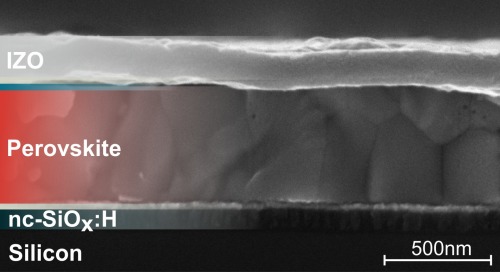From pv magazine Global
Researchers from Berlin’s Helmholtz Zentrum (HBZ) Research Institute have developed a perovskite-silicon tandem solar cell with an efficiency of 25.5%.
According to the research team, a silicon layer was etched on the back-side of the cell, while the perovskite layer was applied by spincoating onto the smooth front-side of the silicon. By applying a a polymer light management (LM) foil to the front-side of the device, the scientists were able to create a high-quality perovskite film on a flat surface, while still benefiting from the front-side texture.
“In this way, we succeeded in considerably improving the efficiency of a monolithic perovskite-silicon heterojunction tandem cell from 23.4 % to 25.5 %,” said the research coordinator Marko Jošt.
The German researchers have also conducted calculations on how different device designs with textures at various interfaces affect efficiency, by relying on a numerical model for complex 3D features and their interaction with light. “Based on these complex simulations and empirical data, we believe that an efficiency of 32.5 % can realistically be achieved – if we succeed to incorporate high quality perovskites with a band gap of 1.66 eV,” Jošt continued.
Simulations realized at HZB laboratories also showed that the LM foil used on the front-side of the solar cell is particularly advantageous under diffuse light irradiation, and not only under perpendicularly incident light.
This content is protected by copyright and may not be reused. If you want to cooperate with us and would like to reuse some of our content, please contact: editors@pv-magazine.com.









1 comment
By submitting this form you agree to pv magazine using your data for the purposes of publishing your comment.
Your personal data will only be disclosed or otherwise transmitted to third parties for the purposes of spam filtering or if this is necessary for technical maintenance of the website. Any other transfer to third parties will not take place unless this is justified on the basis of applicable data protection regulations or if pv magazine is legally obliged to do so.
You may revoke this consent at any time with effect for the future, in which case your personal data will be deleted immediately. Otherwise, your data will be deleted if pv magazine has processed your request or the purpose of data storage is fulfilled.
Further information on data privacy can be found in our Data Protection Policy.